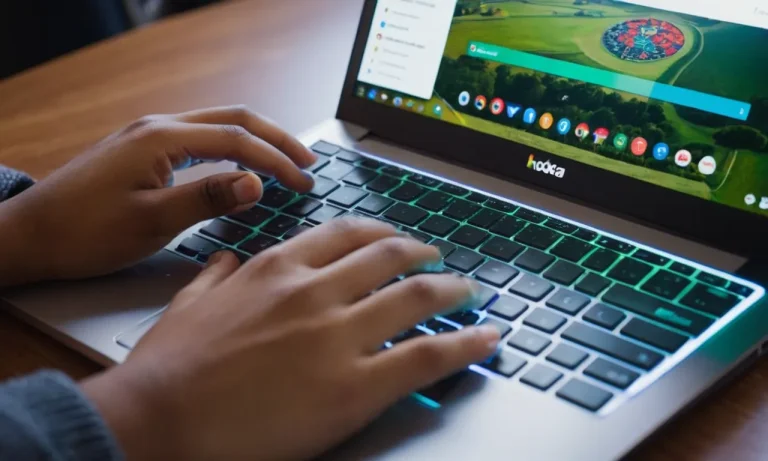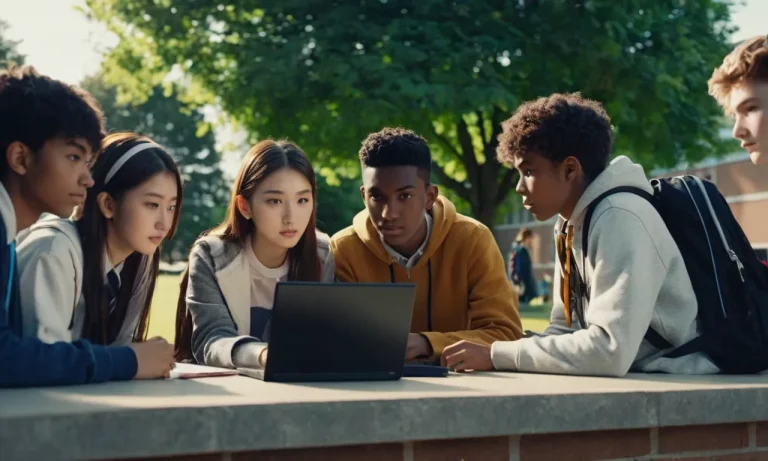Obtaining a driver’s permit is a significant milestone for many teenagers, as it represents the first step towards gaining independence and mobility. However, the excitement of holding that coveted permit often raises questions about the extent of privileges it grants.
One of the most common queries is whether a permit holder can drive to school alone.
If you’re short on time, here’s a quick answer to your question: In most states, driving to school alone with a permit is not allowed. Permit holders are typically required to be accompanied by a licensed adult driver who meets specific age and experience criteria.
In this comprehensive article, we will delve into the intricacies of driving with a permit, exploring the legal requirements, restrictions, and exceptions that vary across different states. We will also provide valuable insights into the rationale behind these regulations and offer practical tips for permit holders to navigate this phase of their driving journey safely and responsibly.
Understanding Permit Restrictions
Obtaining a learner’s permit is an exciting milestone for many teenagers, as it marks the beginning of their journey towards becoming a licensed driver. However, it’s crucial to understand that driving with a permit comes with certain restrictions aimed at ensuring the safety of the permit holder and others on the road.
These restrictions vary from state to state, but generally revolve around age and experience requirements, supervised driving conditions, and passenger limitations.
Age and Experience Requirements for Permit Holders
Most states require individuals to be at least 15 or 16 years old before they can apply for a learner’s permit. Additionally, some states may require permit holders to complete a certain number of supervised driving hours or hold the permit for a specific period before they can apply for a driver’s license.
This allows them to gain valuable experience and develop the necessary skills for safe driving. According to the Insurance Institute for Highway Safety, in 2022, the minimum permit age was 14 in some states and 16 in others.
Supervised Driving Requirements
One of the most significant restrictions for permit holders is the requirement to drive under the supervision of a licensed adult driver. This adult, typically a parent, guardian, or certified driving instructor, must be present in the vehicle and meet specific age and experience criteria set by the state.
The purpose of this restriction is to ensure that the permit holder has guidance, supervision, and immediate feedback while practicing their driving skills. Can you imagine how nerve-wracking it would be to have a new driver behind the wheel without any experienced supervision?
😬 That’s why this requirement is so crucial!
Passenger Limitations
Many states also impose limitations on the number and type of passengers that permit holders can transport while driving. These restrictions are in place to minimize distractions and reduce the risk of accidents caused by inexperienced drivers being overwhelmed by the presence of multiple passengers.
For example, California prohibits permit holders from transporting passengers under 20 years old unless accompanied by a licensed driver aged 25 or older. Isn’t it amazing how these rules prioritize safety while allowing young drivers to gain experience gradually? 👏
Remember, the ultimate goal of these permit restrictions is to ensure the safety of permit holders, their passengers, and other road users. By adhering to these guidelines and gaining valuable experience under supervision, young drivers can develop the necessary skills and confidence to become responsible and safe licensed drivers.
So, while it may seem frustrating at times, embrace the learning process and prioritize your safety and the safety of others on the road.
State-Specific Regulations for Driving to School with a Permit
Obtaining a learner’s permit is an exciting milestone for many teenagers, as it marks the beginning of their journey towards becoming a licensed driver. However, it’s crucial to understand that the rules and regulations surrounding driving with a permit can vary significantly from state to state.
Navigating these differences can be a daunting task, but fear not – we’re here to shed some light on the matter.
Variations in State Laws
The restrictions and requirements for driving to school with a permit can differ widely across the United States. For instance, some states, such as California, strictly prohibit permit holders from driving to and from school without a licensed adult in the vehicle.
On the other hand, states like Tennessee allow permit holders to drive to and from school without an adult present, provided they meet specific requirements like having completed a certain number of supervised driving hours.
Exceptions and Special Circumstances
- Some states, like Massachusetts, make exceptions for permit holders who need to drive to and from school due to extenuating circumstances, such as medical emergencies or lack of public transportation.
- Other states, like Illinois, allow permit holders to drive to and from school if they have completed a specific driver’s education course.
Penalties for Violating Permit Restrictions
Violating the permit restrictions in your state can have serious consequences. In many cases, it can lead to fines, license suspension, or even the revocation of your permit altogether. According to a study by the Insurance Institute for Highway Safety, approximately 20% of permit holders in the United States have been cited for violating permit restrictions.
To avoid these penalties, it’s crucial to familiarize yourself with your state’s specific laws and adhere to them diligently. Don’t risk jeopardizing your driving privileges before you even obtain your license!
Remember, the road to becoming a licensed driver is a journey, and every state has its own set of rules and regulations. By staying informed and following the guidelines, you’ll ensure a smooth and safe transition from a permit holder to a fully licensed driver.
So, buckle up, stay vigilant, and embrace the exciting adventure that lies ahead! 😊
The Rationale Behind Permit Restrictions
Promoting Safe Driving Habits
Driving is a complex task that requires a combination of knowledge, skills, and experience. Permit restrictions for new drivers are designed to promote safe driving habits from the very beginning. By limiting the situations in which new drivers can operate a vehicle, these restrictions aim to reduce the risk of accidents and help young drivers develop responsible behaviors on the road.
According to the Centers for Disease Control and Prevention (CDC), motor vehicle crashes are a leading cause of death among teenagers in the United States, highlighting the importance of these safety measures.
Reducing Distractions and Risks
One of the primary concerns for new drivers is their susceptibility to distractions and risky behaviors. Permit restrictions help mitigate these risks by prohibiting activities that could divert the driver’s attention, such as:
- Using a cell phone or other electronic devices while driving
- Having multiple passengers in the vehicle, which can be a significant source of distraction
- Driving during nighttime hours or in inclement weather conditions, which pose additional challenges
By limiting these potential distractions and high-risk situations, permit restrictions create a more controlled environment for new drivers to gain experience and develop their skills gradually. According to a study by the Insurance Institute for Highway Safety (IIHS), 👍 graduated driver licensing programs, which include permit restrictions, have been shown to reduce crashes involving teen drivers by up to 20-40%.
Gradual Exposure to Driving Scenarios
Driving is a complex skill that requires practice and exposure to various scenarios. Permit restrictions acknowledge this by introducing new drivers to different driving situations in a gradual and controlled manner.
For example, they may initially be allowed to drive only during daylight hours and on familiar routes before progressing to more challenging conditions. This approach helps new drivers build confidence and experience without overwhelming them with too many variables at once.
It’s like learning to swim – you start in the shallow end before venturing into deeper waters. According to the National Highway Traffic Safety Administration (NHTSA), this gradual exposure is crucial for developing safe driving habits and reducing the risk of accidents among new drivers.
While permit restrictions may seem limiting at first, they serve an important purpose in ensuring the safety of new drivers and others on the road. By promoting safe driving habits, reducing distractions and risks, and allowing for gradual exposure to driving scenarios, these restrictions provide a solid foundation for developing responsible and skilled drivers.
😊 After all, the ultimate goal is to create a safer driving environment for everyone.
Tips for Permit Holders and Their Supervisors
Maximizing Supervised Driving Practice
One of the most crucial aspects of obtaining a driver’s license is accumulating sufficient supervised driving practice. According to the National Highway Traffic Safety Administration (NHTSA), teenagers with more supervised driving experience have a lower risk of being involved in accidents once they become licensed drivers.
Here are some tips to maximize your supervised driving practice:
- Set a consistent schedule for practice sessions and stick to it. Consistency is key to building confidence and muscle memory.
- Gradually increase the difficulty level by practicing in various conditions, such as night driving, highway driving, and inclement weather.
- Seek feedback from your supervisor after each session and discuss areas for improvement.
Communicating Effectively with Supervisors
Effective communication between permit holders and their supervisors is essential for a productive learning experience. Here are some tips to improve communication:
- Establish clear expectations and ground rules from the outset. Discuss each other’s roles, responsibilities, and boundaries.
- Don’t be afraid to ask questions or seek clarification if you’re unsure about something. 😊 It’s better to ask than to make assumptions.
- Listen attentively to your supervisor’s instructions and feedback. They have valuable experience to share.
Preparing for the Road Test
As you near the end of your supervised driving period, it’s time to start preparing for the road test. This can be a nerve-wracking experience, but with proper preparation, you can increase your chances of success. Here are some tips:
- Review the road test requirements and scoring criteria for your state. Familiarize yourself with the maneuvers you’ll be expected to perform.
- Practice the specific routes and areas where the road test is typically conducted. This will help you feel more comfortable with the environment.
- Get plenty of rest the night before the test, and arrive at the testing center early to avoid feeling rushed.
Remember, obtaining a driver’s license is a significant milestone, but it’s also a big responsibility. By following these tips and taking the process seriously, you’ll be well on your way to becoming a safe and confident driver. 👏 Good luck!
Conclusion
Driving to school alone with a permit is generally not permitted in most states due to the legal restrictions and safety considerations surrounding permit holders. These regulations aim to provide a structured and supervised learning environment, allowing new drivers to gain experience gradually while minimizing risks.
By understanding and adhering to the permit restrictions in your state, you can ensure a smooth transition from a permit holder to a fully licensed driver. Remember, the ultimate goal is to develop safe and responsible driving habits that will serve you well throughout your driving journey.
Embrace the learning process, seek guidance from experienced supervisors, and prioritize safety above all else.






